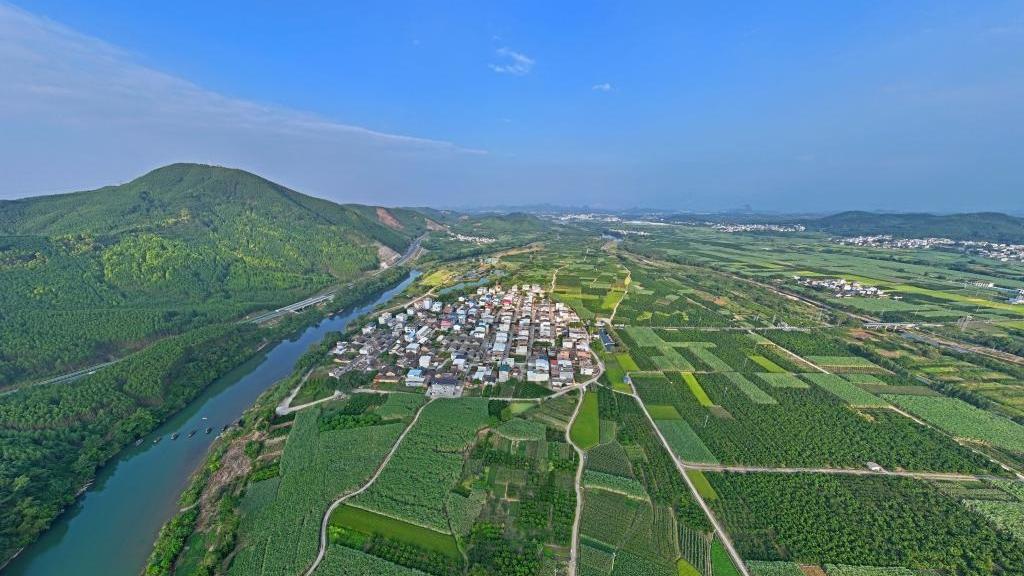Flagship BRI project in Indonesia marks anniversary

A passenger takes a selfie on Thursday in front of a train at Padalarang Station on the Jakarta-Bandung High-Speed Railway in Indonesia. The railway marked its first full year of operation on Thursday. Over the year, the high-speed railway has handled 5.79 million passenger trips. (XU QIN/XINHUA)
The Jakarta-Bandung High-Speed Railway, a flagship project of the China-proposed Belt and Road Initiative, marked the first anniversary of its official operation on Thursday, showcasing impressive achievements in both transportation and economic development.
Over the past year, the railway has handled 5.79 million passenger trips, with a peak daily seat occupancy rate of 99.6 percent, according to China Railway International, the company operating the service.
Since its commercial launch on Oct 17 last year, the 142.3-kilometer railway has safely completed 15,826 train trips, covering a distance of more than 2.57 million km.
The railway, which boasts a maximum design speed of 350 km/h, has reduced the travel time between Indonesia's bustling capital, Jakarta, and the popular tourist destination of Bandung from over three hours to just 46 minutes. This has made it a highly popular commuting option for residents as well as tourists, providing a safe, green, and comfortable means of transportation.
To meet the passenger surge, the number of trains in service daily has increased from 14 to as many as 52 during peak periods, with the daily seating capacity growing from 8,400 to more than 31,000. The railway has seen its single-day passenger trip volume peak to 24,132.
The high-speed train service has become a game changer for many Indonesians. Rahmanda, who runs a transportation consultancy in Jakarta, said he could now reach Bandung within an hour. "The punctuality and reliability of the train service ensure that I can meet clients without worrying about traffic delays," he added.

Photo taken on April 17, 2024, shows a high-speed electrical multiple unit (EMU) train of the Jakarta-Bandung High-Speed Railway on the platform of Halim Station in Jakarta, Indonesia. (Photo/Xinhua)
Improved services
Passenger services have been improved to encourage more consumption. The introduction of online ticketing has been a major success, with 82 percent of tickets now purchased through digital platforms. The system also supports online ticket changes and refunds, while physical ticket windows remain available.
A flexible pricing policy offers passengers more options, and additional staff members are deployed during peak travel hours to ensure smooth boarding and departures. Several stations along the route, such as Halim and Padalarang, offer a variety of amenities including restaurants, convenience stores, and cafes.
The railway owes its huge success to the close collaboration between Chinese and Indonesian teams. More than 400 Indonesians have completed certification training under Chinese mentors, and some have already taken on critical roles in the railway's daily operations.
Agus Dewiono Widodo, who trained under Chinese high-speed train pilot Zhang Yue, said he is proud to be one of Indonesia's first high-speed train drivers, crediting the support and guidance of his Chinese mentor and colleagues for his achievement.
Like Widodo, many Indonesians who have successfully completed certification training can now independently operate the high-speed trains. This progress in technology transfer has set the foundation for Indonesia to independently manage and operate the railway in the future.
Economic driver
The Jakarta-Bandung High-Speed Railway is more than just a transportation project — it is a powerful driver of economic development in the Southeast Asian country.
By connecting Indonesia's capital with the capital of West Java, the country's most populous province, the railway has enhanced regional connectivity and facilitated economic integration. The cities along the route are now experiencing a boom in commerce and job creation, with local businesses around major stations benefiting from higher customer traffic.
The Indonesian government is also leveraging the railway to boost tourism, promoting scenic and cultural attractions along the route.
Nia Niscaya, a senior official at Indonesia's Ministry of Tourism and Creative Economy, said: "Bandung, with its cool climate and stunning landscapes, is a major tourist destination. The high-speed railway will help attract more international visitors, including Chinese tourists, to experience Bandung's beauty, food, and cultural heritage."
Erick Thohir, Indonesia's minister of state-owned enterprises, said the use of electricity to run the high-speed trains is in line with the country's green development goals, significantly reducing its reliance on fossil fuels.
According to the Indonesian government, the railway helps save approximately $208 million in fuel costs annually. Between 2019 and 2023, the project added about $5.62 billion to the GDP of Jakarta and West Java, government data showed.
As the railway embarks on its second year of operation, the Chinese and Indonesian teams plan to continue their close collaboration to meet evolving passenger demands. Efforts will focus on improving service quality, optimizing train schedules, and further enhancing passenger capacity.
The anniversary of the railway marks a significant milestone in the deepening China-Indonesia partnership under the BRI, bringing tangible benefits to the people of the Southeast Asian country and further strengthening ties between the two nations.
Photos
Related Stories
- China's trade with BRI countries reaches 15.21 trillion yuan in Q1-Q3
- Silk Road Maritime Association offers solutions for global shipping sector
- Moroccan cyclist rides to China, impressed by development stimulated by BRI along the route
- BRI "well-placed" in DR Congo: minister
- Hong Kong perfectly positioned to play pivotal role in Belt and Road Initiative: John Lee
Copyright © 2024 People's Daily Online. All Rights Reserved.









